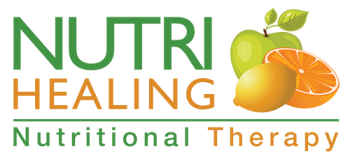How diet can improve your Heart - November 2008
Heart disease often starts in adolescence with a gradual build-up of fatty and fibrous deposits adhering in patches to the artery walls. This goes undetected until the first or fatal heart attack.
What is Cholesterol?
Cholesterol is a complex fatty substance, a necessary part of the structure of our cell membranes. The body produces about 1000 milligrams of cholesterol per day to manufacture membranes and to provide the base for the synthesis of the sex hormones, adrenal hormones, vitamin D and bile acid.
The body produces about 75% of our body’s cholesterol and only 25% comes from cholesterol in food. Cholesterol from food does not automatically become cholesterol in your blood.
Eating large amounts of cholesterol (say from eggs) does not necessary raise the blood cholesterol of healthy people. When there is an abundance of food cholesterol, the body makes less from its own resources or excretes more.
What raises blood Cholesterol?
Blood cholesterol is raised by too much saturated fats and being overweight. Fat people either convert too much fat into blood cholesterol or do not excrete enough. When blood cholesterol becomes too high, fatty and fibrous materials gradually accumulate on the inside of arteries. As they build up, they cause a narrowing and hardening of the arteries (called arteriosclerosis), which slows down blood flow. In addition platelets become sticky, increasing the risk of a clot forming eventually blocking the artery and cutting off the oxygen & nutrients to the cells. This will increase the risk of a heart attack and heart disease.
Cholesterol is made up of Total cholesterol, Triglycerides, LDL & HDL, which circulate in the blood, but the 2 critical ones are labelled 'high' or 'low' due to their density and composition.
High-density (HDL) 'good guys' appears to protect against heart disease - as it circulates; it clears cholesterol from the arteries and helps its removal from the body.
Low-density (LDL) 'bad guys' linked to heart disease and is contributed to the fatty build up on artery walls. The ratio of HDL to LDL is more important than the level of cholesterol.
Diet & exercise can help to shift the balance towards a healthier ratio; higher protective HDL to LDL and prevent heart disease
Homoysteine levels
Homocysteine is a toxic amino acid (protein), which in the presence of methyl foods will be converted back to an important amino acid called methionine (necessary for tissue repair, stress hormones). Methyl groups, like vitamins, are essential in our diet. When our body is low in methyl foods then homocysteine conversion is compromised, levels rise and so therefore does the risk of cardiovascular disease. Damage to the nervous system, immune system, kidneys and the liver may also occur.
Foods that contain significant levels of the methy groups are - sugar beet, spinach, prawns, shrimps and eggs. Or you can supplement with Betaine.
What are the risks?
The risk of developing heart problems will depend upon a number of 'Risk factors' such as:
- Smoking
- Diabetes
- Being overweight
- Being inactive
- High blood pressure
- High blood cholesterol (both total & LDL)
- Genetic factors (family)
- Over 50
- High blood triglycerides
- Raised homocysteine levels
How can we help to lower our Cholesterol?
Maintain a healthy weight
Reducing excess weight almost always reduces your cholesterol, as well as lowering blood pressure.
Keep saturated fats low
Butter, cream, cheese, fat on meat, processed foods and fried fast food raise cholesterol and LDL, they also increase the likelihood of obesity.
Increase plant sterols
These natural plant compounds are found in nuts, seeds, legumes, cereals grains, fruit, vegetables and refined vegetable oils, they have the effect of reducing LDL in the blood.
The folate and B¹ found in these food groups will also be beneficial in lowering homocysteine levels, which, when raised may increase the risk of heart problems.
Increase fibre
Cholesterol can only be removed from our body through our stools and this is increased by dietary fibre, if fibre is absent, up to 94% of cholesterol is reabsorbed and recycled. This is one of the reasons why low-fibre diets increase blood cholesterol levels. Make sure you eat plenty of soluble fibre - oats, oat bran, barley bran, rice bran (but not wheat bran), dried beans, lentils, fruit & vegetables.
Decrease Alcohol intake
Drink moderately - a glass of red wine a day instead of 3 or 4!!
Increase Antioxidants
They protect against heart disease by preventing the 'bad' LDL cholesterol from being oxidized & forming fatty plaque on the inside of the walls of our blood vessels. Found in fruits & vegetables, red wine.
Keep active
Regular exercise burns up extra calories, boost levels of 'good' HDL - cholesterol.
20-30 minutes a day - walking, swimming, cycling and skipping.
Foods that fight cholesterol
Fruit and vegetables - contain Vitamins A, C & E (powerful antioxidants) which de-activate harmful oxygen molecules and reduce homocysteine levels.
- Fish - contains essential fatty acids - Omega 3 - helps prevents clotting, makes arteries more flexible, anti-inflammatory
- Tea - both green and black (regular) tea carry antioxidants
- Nuts - walnuts, almonds, macadamias contain good fats, fibre and high in Vitamin E (antioxidant)
- Garlic - keep arteries more flexible, studies have shown that it lowers both total and LDL cholesterol.
- Red Wine - one glass of red wine a day is an excellent source of antioxidants in the form of polyphenols.
So act NOW change your diet and have a regular MOT
Check your Cholesterol & Homocysteine levels and keep your Heart Healthy!!
